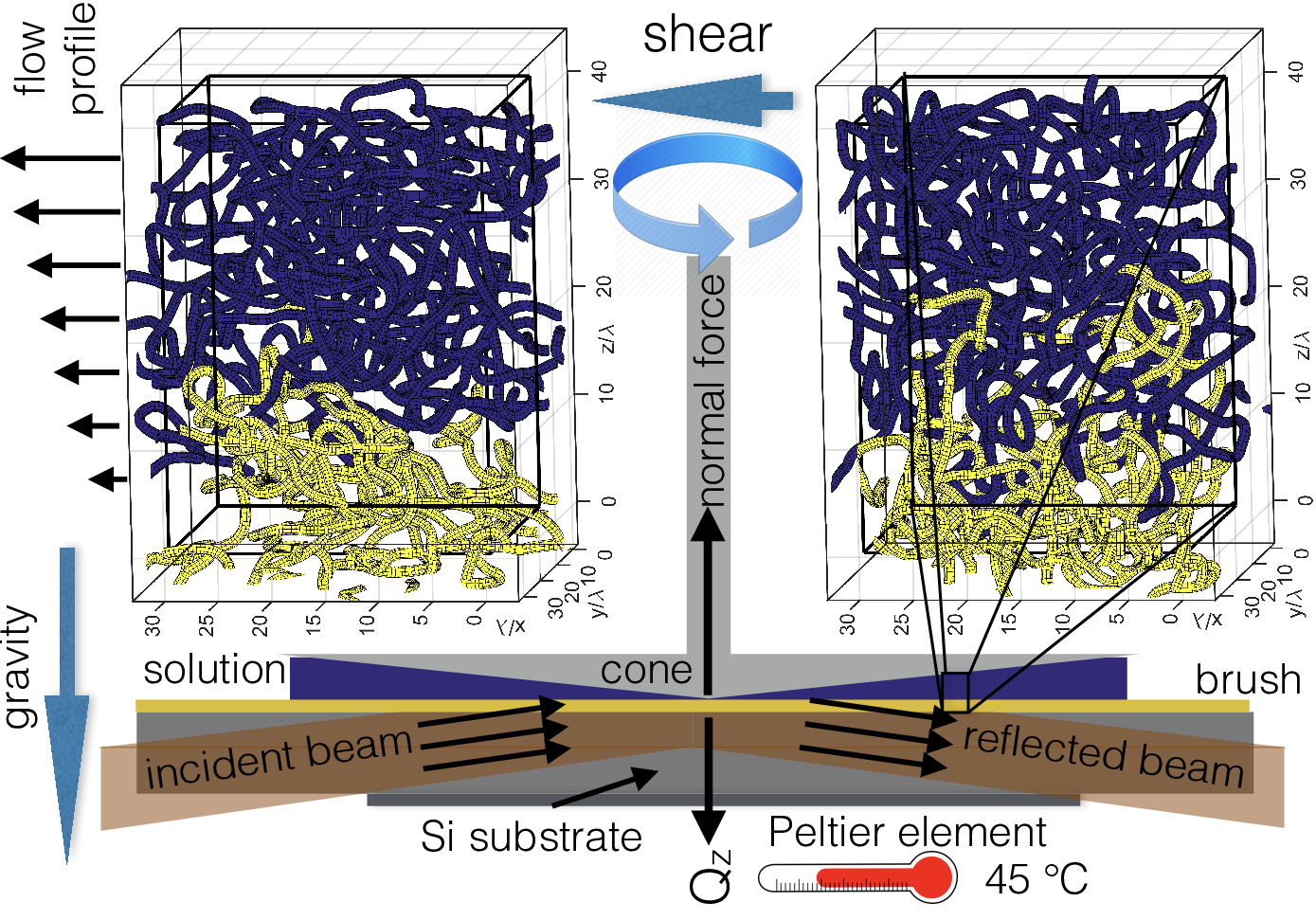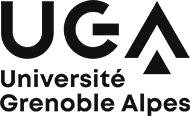Structure and Dynamics of entangled polymers under shear flow studied by Neutron Scattering
Seminar
On December 11, 2023

Dr. Philipp GUTFREUND - Institute Laue Langevin
The study of flow in soft matter is a multidisciplinary and active research area. The challenge is to relate out of equilibrium microscopic fluids structure and dynamics to their macroscopic rheological response. Entangled polymers show unique flow behaviors, since the relaxation processes occur on time scales relevant for our daily lives, ranging from milliseconds to hours or even days. Understanding and characterizing these structure-property relationships is a current challenge that will improve our fundamental understanding of visco-elastic flow as well as give us access to improved material properties and applications. Here we present the latest results on the combination of Neutron Scattering and Rheology at the Institut Laue-Langevin, Grenoble on entangled linear polymers. Two examples will be presented: Firstly a commercially purchased rheometer with an adapted cone/plate or plate/plate geometry [1] was used in conjunction with Neutron Reflectometry (NR) to probe the structure of polystyrene (PS) brushes chemically attached to a solid surface sheared against a semidilute PS solution (see Fig.). We report a reversible collapse of the polymer brush once the bulk solution is sheared in the non-Newtonian regime [2]. We explain the observation by the normal stress difference of the free chains exerted on the brush overwhelming any internal brush dynamics.
The second example combines our newly developed cone-plate shear device with Small Angle Neutron Scattering (SANS) and Neutron Spin Echo Spectroscopy (NSE) [3]. Here we will present measurements on two samples: The first one is an entangled melt of polydimethyl-siloxane (PDMS) where we report on the single chain form factor and the intermediate scattering function under shear rates approaching the non-linear regime [4]. While neither the polymer chain structure nor the microscopic dynamics are affected by this moderate shear rate (Wi ≈ 0.5) the ‘raw’ NSE spectrum is significantly influenced by Doppler scattering due to the moving sample and a way to normalize this effect out will be presented. As a second sample we will present results on entangled PS solutions sheared at very high shear rates (Wi ≈ 30) where clear molecular deformation is visible with SANS [5].
Altogether these technical advances will allow to use NSE for in situ sheared samples even at rather high shear rates enabling direct testing of important theories in rheology like the idea of Convective Constraint Release (CCR) in sheared entangled polymers.
[1] M. Wolff, P. Kuhns, G. Liesche, J. F. Ankner, J. F.Browning, P. Gutfreund, J. Appl. Cryst. 46, 1729 (2013).
[2] A. Korolkovas, C. Rodriguez-Emmenegger, A. de los Santos Pereira, A. Chennevi`ere, F. Restagno, M. Wolff,
F. A. Adlmann, A. J. C. Dennison, P. Gutfreund, Macromolecules 50, 1215 (2017).
[3] M. Kawecki, P. Gutfreund, F. A. Adlmann, E. Lindholm, S. Longeville, A. Lapp, M. Wolff, J. Phys.: Conf. Ser. 746, 012014 (2016).
[4] M. Kawecki, F. A. Adlmann, P. Gutfreund, P. Falus, D. Uhrig, S. Gupta, B. Farago, P. Zolnierczuk, M. Cochran, M. Wolff, Sci. Rep.
9, 1-6 (2019).
[5] A. Korolkovas, S. Prevost. M. Kawecki, A. Devishvili, F.A. Adlmann, P. Gutfreund, M. Wolff, Soft Matter 15, 371 (2018).
The second example combines our newly developed cone-plate shear device with Small Angle Neutron Scattering (SANS) and Neutron Spin Echo Spectroscopy (NSE) [3]. Here we will present measurements on two samples: The first one is an entangled melt of polydimethyl-siloxane (PDMS) where we report on the single chain form factor and the intermediate scattering function under shear rates approaching the non-linear regime [4]. While neither the polymer chain structure nor the microscopic dynamics are affected by this moderate shear rate (Wi ≈ 0.5) the ‘raw’ NSE spectrum is significantly influenced by Doppler scattering due to the moving sample and a way to normalize this effect out will be presented. As a second sample we will present results on entangled PS solutions sheared at very high shear rates (Wi ≈ 30) where clear molecular deformation is visible with SANS [5].
Altogether these technical advances will allow to use NSE for in situ sheared samples even at rather high shear rates enabling direct testing of important theories in rheology like the idea of Convective Constraint Release (CCR) in sheared entangled polymers.
[1] M. Wolff, P. Kuhns, G. Liesche, J. F. Ankner, J. F.Browning, P. Gutfreund, J. Appl. Cryst. 46, 1729 (2013).
[2] A. Korolkovas, C. Rodriguez-Emmenegger, A. de los Santos Pereira, A. Chennevi`ere, F. Restagno, M. Wolff,
F. A. Adlmann, A. J. C. Dennison, P. Gutfreund, Macromolecules 50, 1215 (2017).
[3] M. Kawecki, P. Gutfreund, F. A. Adlmann, E. Lindholm, S. Longeville, A. Lapp, M. Wolff, J. Phys.: Conf. Ser. 746, 012014 (2016).
[4] M. Kawecki, F. A. Adlmann, P. Gutfreund, P. Falus, D. Uhrig, S. Gupta, B. Farago, P. Zolnierczuk, M. Cochran, M. Wolff, Sci. Rep.
9, 1-6 (2019).
[5] A. Korolkovas, S. Prevost. M. Kawecki, A. Devishvili, F.A. Adlmann, P. Gutfreund, M. Wolff, Soft Matter 15, 371 (2018).
Published on July 21, 2023
Updated on July 21, 2023
Updated on July 21, 2023
Location
Campus Saint Martin d'Hères
Building Phitem A - Central Amphitheater
Tram station B or C, Gabriel Faure Download access map

